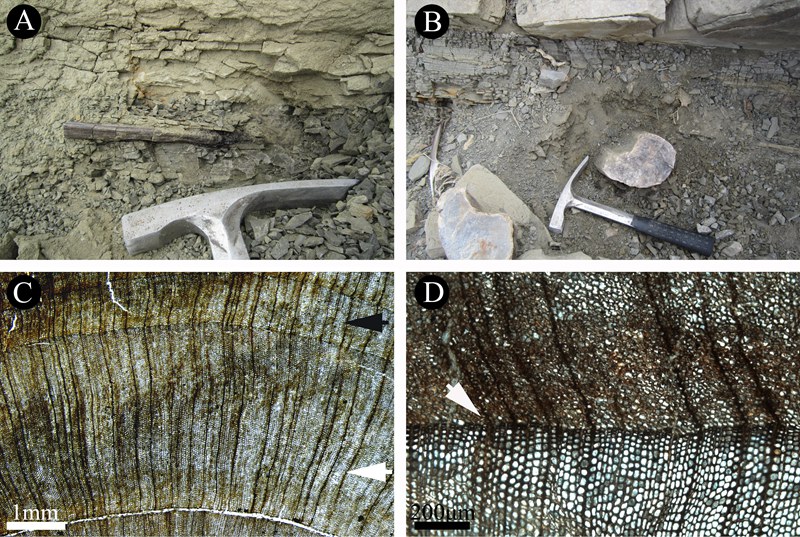A research group headed by Dr. TANG Peng from Nanjing Institute of Geology and Palaeontology, Chinese Academy of Sciences described a permineralised gymnospermous wood, Xenoxylon junggarensis sp. nov. from the Norian (upper Triassic) Huangshanjie Formation in Dalongkou Section, Jimsar County, Xinjiang Uygur Autonomous Region, northwestern China. The pycnoxylic wood consists of thick-walled tracheids and thin-walled rays. It is characterized by commonly rounded to very compressed, contiguous or sometimes separated uniseriate, occasionally rounded and alternate biseriate radial pits and one or two simple, large pits in each corss-field. The fossil wood genus Xenoxylon Gothan is known to be an indicator of cooler and/or wetter climates in the boreal hemisphere during the Mesozoic. Its occurrence in the Huangshanjie Formation from Junggar Basin, together with the palaeobotanical and palynological data, indicates that a wet and temperate climate prevailed in the northern Xinjiang during the Norian interval. The mean sensitivity of analysis of 22 growth rings is 0.36, suggesting a seasonal response to climate. Growth rings in the fossil woods are large (2.3 mm average with a maximum of 5.44 mm), representing either a longer growing season or more favorable conditions for growth, including readily available water and higher temperature. Based on a considerable amount of earlywood and a small percentage of latewood and some indirect evidence, it is hypothesized that growth of Xenoxylon junggarensis in the high-latitude Junggar Basin in the late Triassic was limited by light levels.
This research was recently published in Palaeogeography, Palaeoclimatology, Palaeoecology.
This research was jointly supported by the State Key Laboratory of Palaeobiology and Stratigraphy, National Basic Research Program of China and the National Nature Science Foundation of China.
Related information: Wan, M., Zhou, W., Tang, P., Liu, L., Wang, J., 2016. Xenoxylon junggarensis sp. nov., a new gymnospermous fossil wood from the Norian (Triassic) Huangshanjie Formation in northwestern China, and its palaeoclimatic implications. Palaeogeography, Palaeoclimatology, Palaeoecology 441, 679-687.

Filed photos of the fossil woods and the maps showing cross section

Maps showing the radial and tangential section of the fossil wood
